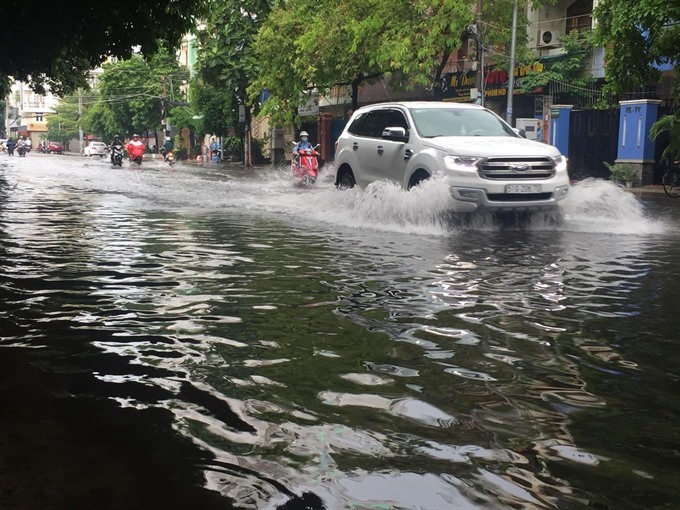 Society
Society

HCM City needs long-term flood-prevention plans that would focus on the most densely populated areas first and limit development in lowland areas, experts said at a meeting held on June 20 in the city.
 |
| Heavy rains cause flooding on a road in District 8. Experts say the city needs new long-term, flood-prevention measures. — VNA/VNS Photo Anh Tuấn |
HCM CITY — HCM City needs long-term flood-prevention plans that would focus on the most densely populated areas first and limit development in lowland areas, experts said at a meeting held on June 20 in the city.
Huỳnh Lê Khoa of the city’s Department of Natural Resources and Environment said that high tides on the Sài Gòn River had increased significantly during the past 10 years, with the highest level recorded at 1.72 metres. Heavy rainfall of over 100mm has been occurring more frequently in the city.
“It’s really difficult to resolve the flooding problem. The city should instead focus on densely populated areas and then the less vulnerable areas,” he added.
Vũ Hải, former vice president of the HCM City Association of Water and Environment, said that flooding had worsened in the city in recent years.
“Floods this year have been more serious than last year,” he said, adding that there are now 40 flood-prone sites in the city.
Current flood-prevention programmes are ineffective because they are too costly and take too much to implement, experts said.
A study conducted by the National University of HCM City in District 7 showed that the average annual loss from flooding was VNĐ13 million (US$565) per household, VNĐ13.4 million ($582) per household business, and VNĐ24 million ($1,50) per enterprise.
The cost includes repair of floors, walls and electrical equipment; dredging of drainage systems inside and outside the house; and time spent to move and repair belongings and furniture.
Companies incur additional costs because they lose about four days of work each year, according to the study.
Other losses include forced leave from work and lost time in traffic jams, all of which can reach up to the equivalent of a total of VNĐ90 billion ($3.94 million) per year.
Solutions
Lê Anh Tuấn, a representative from the HCM City’s Steering Centre for Urban Flood Control, said the city was speeding up the upgrade of Tham Lương-Bến Cát Canal and Nước Lên Canal to address drainage problems.
Eight tide-control drains, 68 drainage dikes, and seven to eight dyke embankments along the Sài Gòn riverbank are being built as well.
All of the projects, which are expected to significantly reduce flooding, are slated to be completed by 2020.
Flooding at 13 out of 17 floor-prone roads would be resolved, while more than 179,100 alleys and nine roads often hit by high tides would also see reduced flooding.
Hải said that, among many solutions, ecological reservoirs could regulate the amount of water in case of heavy rains.
Besides construction of dyke and water reservoirs, the city also needs to continue research on flood-prone areas, he added.
The city has spent more than VNĐ22 trillion ($962.68 million) to solve flooding in the last 10 years. The figure is expected to reach more than VNĐ120 trillion by 2020.
However, the results of flood control have not been commensurate with the effort and costs, experts said.
The city plans to build at least seven new wastewater treatment plants from now until 2020 to deal with its rapidly rising population.
HCM City will need up to VNĐ97.3 trillion ($4.25 billion) for flood-prevention projects in the next three years, experts have said. — VNS




